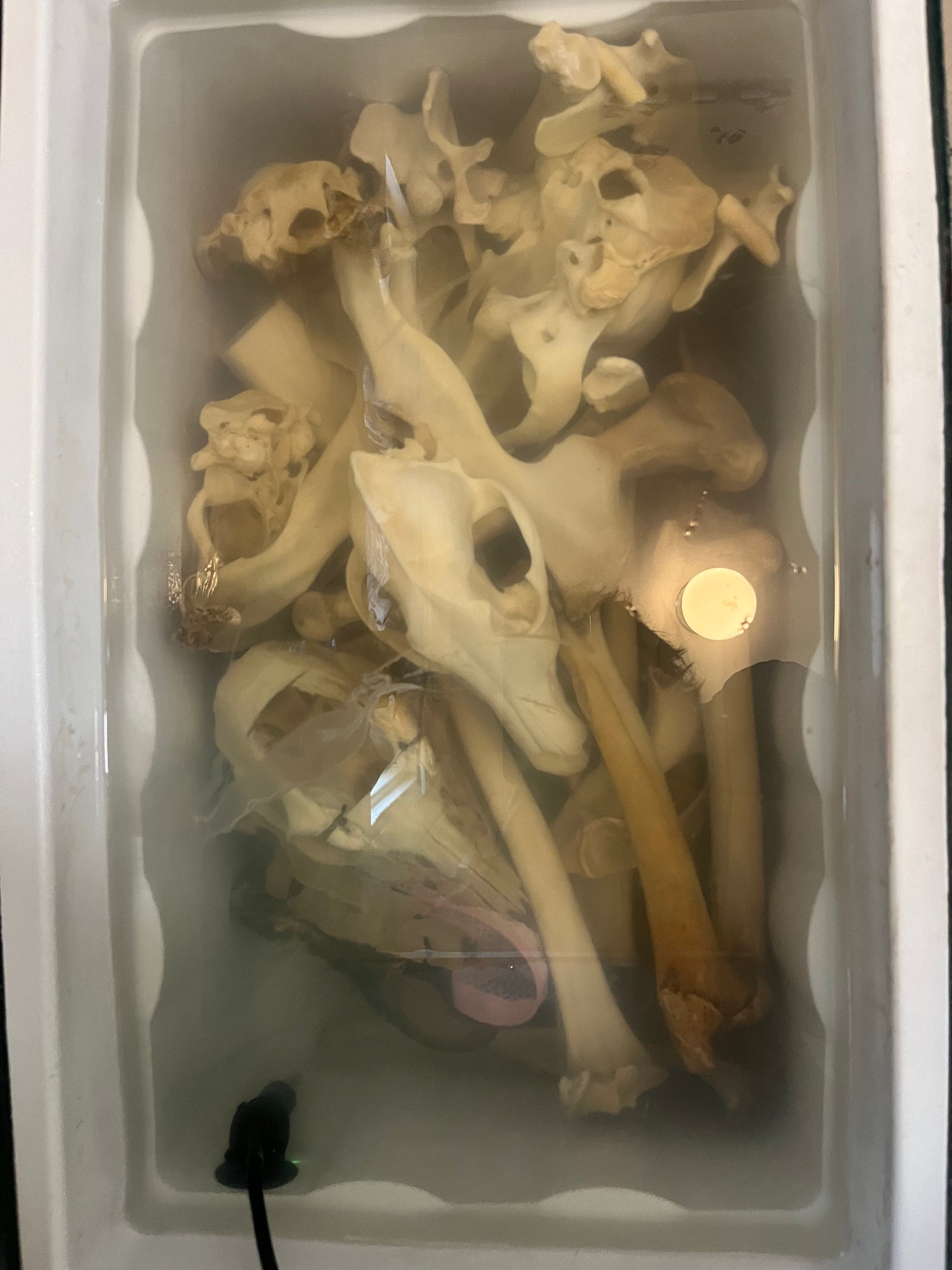
A Comprehensive Guide to Safely Degreasing Bones
Degreasing bones is a vital step in getting them ready for different purposes like crafting, display, or scientific research. However, it's crucial to handle this process with care to avoid harming the bones while effectively getting rid of grease and dirt.
Soaking: The first step in degreasing bones is soaking them in a solution of warm water and mild dish soap. Dawn dish soap is often preferred for its ability to cut through grease. Fully submerge the bones in the solution and let them soak for several days or weeks. Changing the water every few days helps speed up the process by keeping the solution clean and fresh. This soaking helps loosen the grease and dirt without harming the bone structure. They are usually fully clean when the water stays clear between changes, although a thorough inspection of indiviudal bones is important as well to judge this.
Heat: Keeping your degreasing buckets at a temperature between 75-110°F (23°-48°C) is ideal, with around 85°F being optimal. Using a programmable aquarium heater and thermostat can help maintain the correct temperature in the buckets, ensuring effective degreasing without damaging the bones.
Scrubbing (Optional): After soaking, gently scrub the bones using a soft-bristled brush or sponge. Concentrate on areas with visible grease buildup, but be careful not to scrub too hard, as this could damage the bone surface. The aim is to remove loosened grease and dirt without compromising the bone's integrity.
Rinsing: Thoroughly rinse the bones with clean water to remove any soap residue and dislodged grease particles. Pay attention to both the outside and inside of the bones, ensuring all surfaces are thoroughly rinsed. A gentle stream of water or immersion in a clean water container can help with effective rinsing.
Ammonia (Optional): For stubborn grease buildup, you can use ammonia as an additional degreasing agent. Alternating between hot water/Dawn and ammonia soaks can speed up the process by drawing out grease from deep pockets within the bones. However, handle ammonia with care, as it can produce harmful fumes. Ensure proper ventilation and dilute it according to instructions for safety.
Drying: Once the bones are clean and degreased, let them air dry completely in a well-ventilated area. Avoid using heat sources like hairdryers or ovens, as excessive heat can damage the bones. Patience is key during the drying process to ensure the best results.
Final Checks: After drying, inspect the bones for any remaining grease or dirt. If needed, repeat the soaking and scrubbing process until the bones are clean and free from residue. This final inspection ensures the bones are ready for their intended use, whether it's for display, crafting, or research.
Note: Boiling bones is not recommended for degreasing (or at all) as it can damage their structure, making them brittle and prone to breakage. Stick to gentle soaking and scrubbing methods outlined in this guide to effectively degrease bones without causing harm.